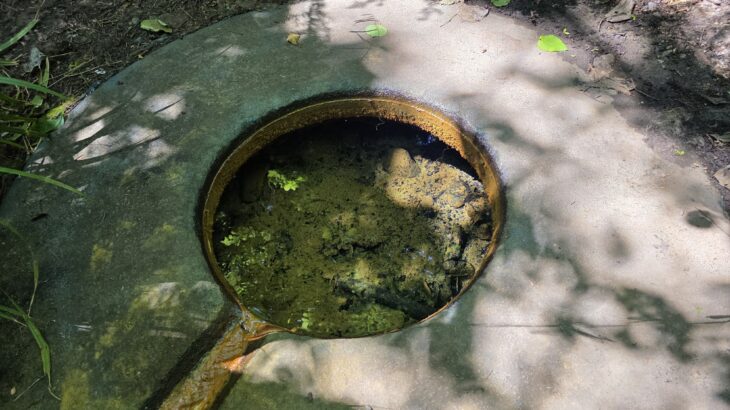An American Sacred Spring in the heart of Seattle – source of the red ochre – Article by Thomas Baurley
Nestled in North Seattle, Licton Spring stands out as a rare survivor among American holy wells and sacred springs. It’s not necessarily a “holy well” in the traditional sense, as defined by the phenomena around Europe known as “holy wells”, but rather a magical spring that was frequented by Native American tribes, who sourced spiritual and magical essences.
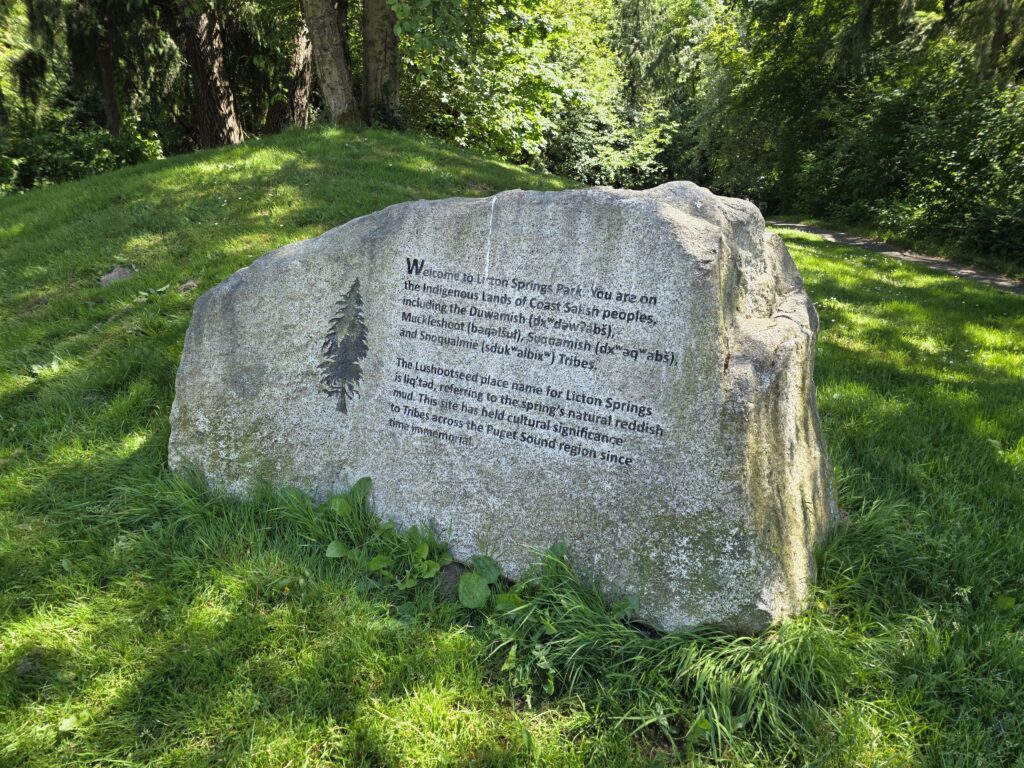
Its name, derived from the Lushootseed word for red ochre, marks the site not only as a geological curiosity but as a spiritual heartland for the Duwamish and other Coast Salish peoples. For thousands of years, the vivid red pigment collected here was used in ceremonies, painting faces, homes and tools with a clay rich in cultural significance.
The ritual use of Licton Spring threads deep into First Nation folklore, giving the site a weight and presence not easily matched. Sacred gatherings drew high-born families who used the ochre for wedding rites, linking their lineage to this unique spring. Even now, elders return to its waters, honoring traditions that predate modern Seattle by centuries.
Today, Licton Spring’s legacy endures, with modern threats to its flow and sanctity sparking new discussions about stewardship and heritage. The site remains a point of reverence, its story connecting both past and present. For those drawn to folklore, holy wells, and sacred springs, this living source invites exploration into both ancient custom and ongoing community meaning. Gain further perspective by exploring the Licton Springs history or deepening your understanding of First Nation traditions.
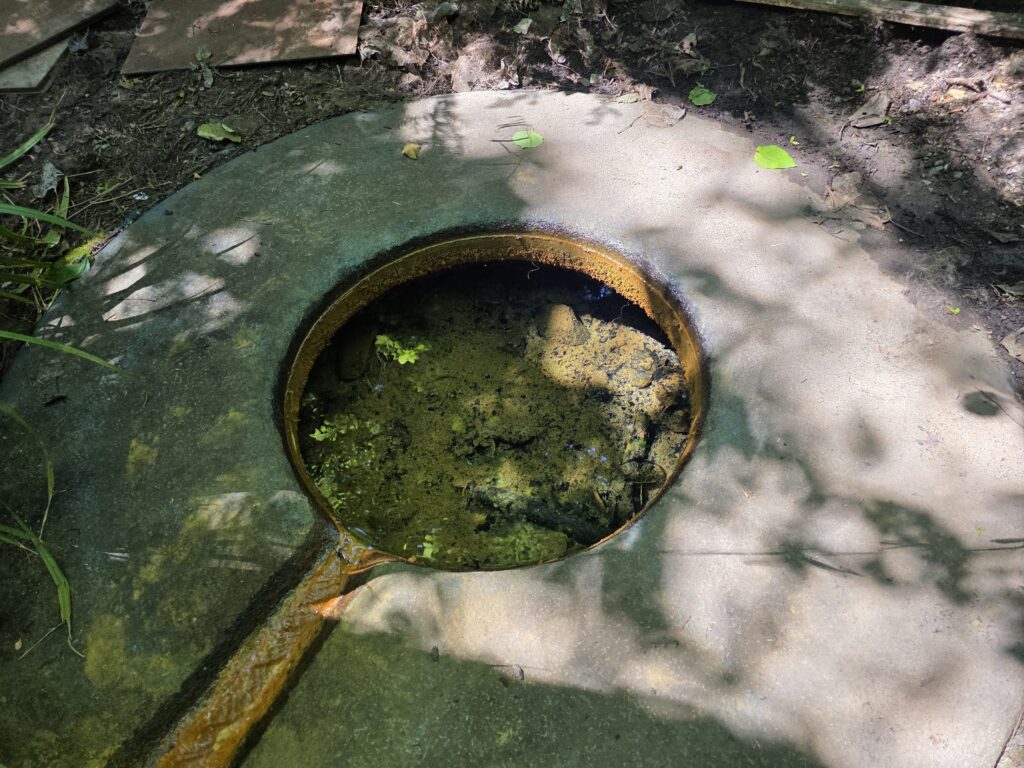
Ancient Origins: The Duwamish, the Creator, and Licton Spring
At the heart of Seattle’s history and the folklore of its holy wells and sacred springs stands Licton Spring, a living monument to the relationship between the Duwamish people and their ancestral homeland. For generations, this iron-rich spring has anchored both ritual and daily life, revered as a lasting gift from the Creator (dókwibuA). Its enduring importance goes far beyond resource or landmark; it is woven into identity, ceremony, and the natural order that shaped Coast Salish culture.
The Name and Meaning of Lee’kteed (le’qtid)
The very name “lee’kteed” (le’qtid) holds keys to understanding the spring’s spirit. Known in Lushootseed, the local Salish dialect, lee’kteed refers to the vivid red ochre clay found only where Licton Spring rises. This rare ochre, both pigment and symbol, transformed the site into a wellspring of cultural practice. Used for ceremonial painting, the red earth became sacred through its scarcity and ritual use, not unlike the ochre collected at sacred sites around the world. Each season, Duwamish ancestors drew this ochre to mark faces, objects, and homes, asserting the presence of the Creator in both daily and sacred acts, affirming Licton Spring as a source of both color and life in the landscape of folklore, holy wells, and sacred springs.
Ceremonial Gatherings and Cultural Practices
Ceremonial gatherings at Licton Spring shaped more than tradition; they shaped entire lineages. Each year, high-ranking families of the Coast Salish would gather to collect the red pigment reserved for milestones such as marriage ceremonies. The spring’s ochre marked both beginnings and bonds. Nobility painted their faces and hands with lee’kteed and adorned their longhouses, sanctifying unions and sealing alliances. This ritual “painting of the bloodline” extended far beyond appearance, reaching into the heart of identity and kinship. Spiritual gatherings included song, storytelling, and remembrance, creating a living thread that connected past to present, making the spring central to cycles of celebration and renewal.
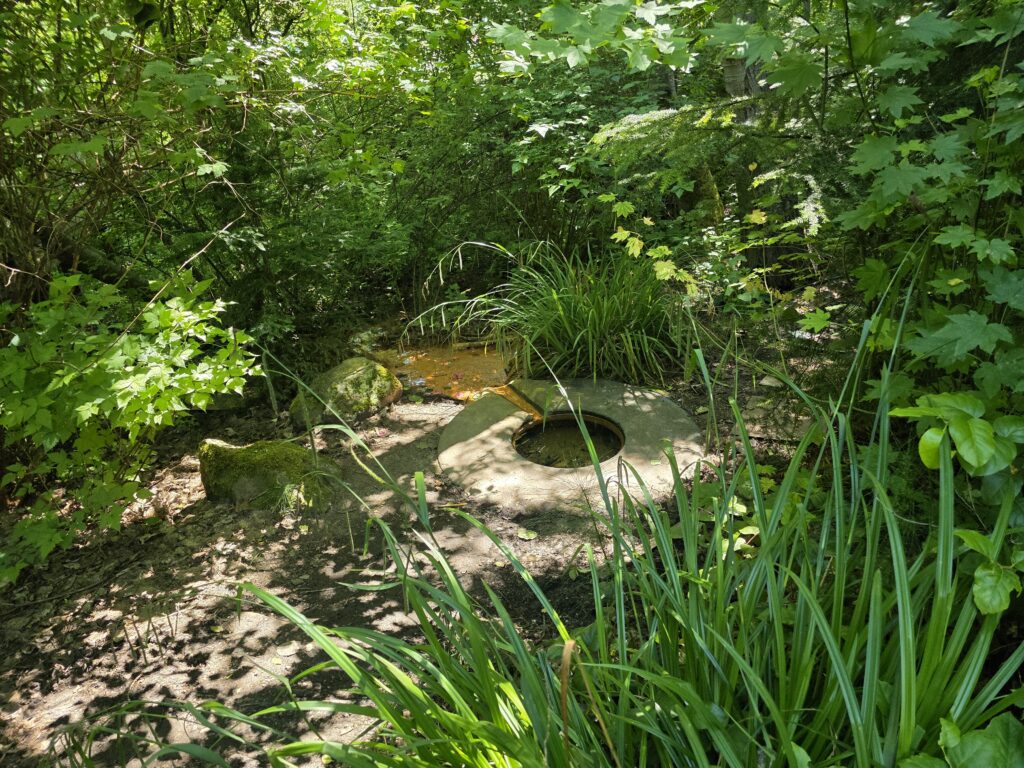
Sweat Lodges, Healing, and Herbal Traditions at Licton Spring
Sacred sites call for sacred spaces. Alongside Licton Spring, the Duwamish built sweat lodges, wu Xted (WUKH-Tud); as places for cleansing, prayer, and community healing. Participants would gather within these warm sanctuaries to sweat, release, and receive the blessing of the spring itself. The water, red ochre, and locally gathered herbs combined in rituals that cleaned both body and spirit. Red pigment mixed with healing plants smoothed onto the skin became medicine as much as symbol; a merging of the physical and the sacred. This tradition wrapped healing, spirituality, and place together, making Licton Spring not only a source but a sanctuary, a witness to the resilience of Duwamish custom. Through these practices, the spring remains central in the tapestry of folklore, holy wells, and sacred springs, radiating meaning across generations.
Colonial Encounters: Transition from Sacred Site to Spa Destination
The transformation of Licton Spring from a center of Indigenous ritual to a spa destination charts a telling chapter in the greater story of folklore, holy wells, and sacred springs. As the 19th century unfurled, curiosity and ambition branded this ancient site with new identities, pushing it into the limelight of early Pacific Northwest health tourism. Community hopes, personal stories, and commercial ventures all converged in this period, bringing forth changes that can still be felt in Licton Springs Park today.
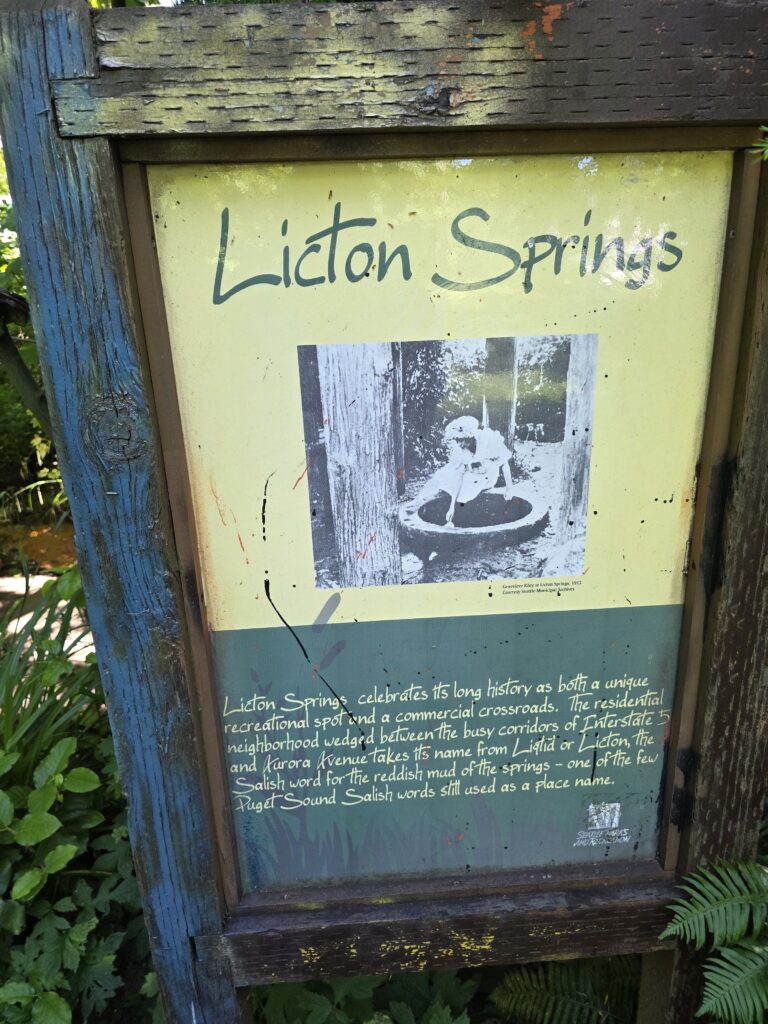
Testing and Transformation: 19th Century Spa Aspirations
In the late 1800s, Licton Spring stood at a crossroads, its sacred waters suddenly subject to the tools and tests of Western science. When Seattle pioneer David Denny acquired the surrounding land in 1870, he looked beyond its spiritual renown and sought scientific confirmation of its merits. A formal testing of two local springs in 1883 revealed mineral riches; one, an iron spring (Licton Spring itself), the other, Sulphur Magnesia. The results helped ignite Seattle’s fascination with the curative powers of natural waters, driving the site into a new age as a health destination.
The folklore surrounding holy wells and sacred springs took on a modern face here. Denny’s own family became part of its healing mythology: his daughter, Emily Inez Denny, was reportedly cured of an “incurable disease” after drinking Licton Spring’s mineral water. Such stories, circulating by word of mouth and period newspapers, blurred the lines between tradition and progress, inviting new visitors eager to find their miracles. Early promotion for the spa promised relief for ailments ranging from arthritis and rheumatism to “tired arches,” anticipating the era’s wider fascination with the therapeutic potential of natural springs, a trend seen in spa towns across the world, as explored in the global history of wellness.
Spa ventures soon followed. The waters were not only offered to guests for bathing but also bottled and sold, their benefits extolled on signage and advertisements. The resort atmosphere invited city dwellers to escape the bustle of urban life and embrace the restorative spirit that had attracted Indigenous communities for millennia.
Rustic Shelters, Community Use, and Decline
As Seattle’s population grew and the hunger for recreation blossomed, Licton Springs drew renewed attention as a public space. At the turn of the 20th century, plans emerged to convert the natural spring into a carefully landscaped retreat. The renowned Olmstead brothers, whose park designs shaped cities across America, were commissioned to create rustic shelters and pathways around the spring, aiming to combine beauty, leisure, and wellness. While these ambitious plans found support among city leaders and health advocates, funding gaps and changing priorities left most of the vision unrealized.
Yet evidence of community engagement lingered. Photographs from the 1910s show crowds gathered around a stone ring built at the spring head, a modest but lasting gesture to mark the site’s local importance. It gained repute as America’s Chalice Well. In 1935, new investment arrived with Edward A. Jensen, who built modest thermal baths, further solidifying Licton Spring’s standing as a spa destination. Signs touted its healing potential, echoing the language seen at famous spa towns around the world, as highlighted in roundups such as notable historic spas.
Despite these efforts, the momentum faded by the mid-20th century. By 1960, the city purchased the grounds, and in time, the spa building and the bathhouse over the spring were torn down. Today, only a simple concrete ring encases the iron spring; a silent witness to decades of changing dreams and shifting values. The rituals of the Duwamish, the optimism of early settlers, and the communal hopes of later generations linger here, layered in the earth and memory, shaping the ongoing conversation around folklore, holy wells, and sacred springs.
Enduring Significance for the Duwamish: Rituals, Resilience, and Responsibility
Licton Spring continues to hold unwavering spiritual meaning for the Duwamish, far surpassing its value as a geographic feature. Over centuries, the site has anchored both ceremonial practice and guardianship traditions, surviving not only shifts in local culture but also the weight of outside pressures. The spring stands today as living proof of the Duwamish’s connection to their ancestral landscape; a connection that weaves together folklore, holy wells, and sacred springs across time.
Guardianship, Ceremony, and Threats to the Sacred Flow
The Duwamish see themselves not just as inheritors but as stewards of Licton Spring, tasked by the Creator (dókwibuA) to sustain its spirit and flow. This perspective aligns with their deep-rooted belief that the spring was a gift; intended to endure, unbroken, into future generations. Elders describe Licton Spring (le’qtid) as irreplaceable and inalienable, echoing a sentiment heard in many indigenous traditions where sacred water sites embody both cultural heritage and living memory.
Ceremonial duties at the spring remain vital threads in Duwamish identity. Seasonal gatherings are marked by quiet rituals; preparation for winter ceremonials, cleansing with mineral waters, and the gathering of red ochre. These acts affirm not only continuity with the past but also a sense of renewed promise, even as the wider world changes. Practices such as applying the ochre to faces and longhouse walls are more than tradition; they are living acts of guardianship and spiritual renewal.
Yet, the very existence of folklore, holy wells, and sacred springs like Licton Spring faces persistent threats. Urban development has encroached upon its source, putting pressure on the fragile water table below. The demolition of historic community landmarks nearby and major construction projects have, according to Duwamish elders, noticeably reduced the spring’s flow. For those who return season after season, these changes are not merely observed; they are felt, a lessening of the song that once ran through both water and ceremony.
The Duwamish remain vocal in their call to protect Licton Spring. They make clear, in ways both spiritual and practical, that this site cannot be recreated, moved, or replaced. Its loss would silence a unique relationship that spans centuries. Their experience reflects wider Indigenous struggles to defend sacred places across North America, where legal, cultural, and environmental barriers challenge the continuity of traditions that have outlasted empires and time. To better understand the depth of these challenges and how tribes fight to protect sacred spaces, the story of Indigenous legal barriers to protecting sacred lands provides a valuable wider context.
What emerges at Licton Spring is a lived resilience; a quiet resistance that refuses to break the chain between ancestor and descendant. Through ceremony, storytelling, and public stewardship, the Duwamish maintain their bond with the spring, inviting others to recognize its irreplaceable value. In the shadow and sunlight of the park, Licton Spring remains not just a feature of the land, but a pulse that sustains folklore, holy wells, and sacred springs for all who listen.
Licton Spring in a Global Context: Folklore, Holy Wells, and Sacred Springs
Stepping back from the Pacific Northwest, Licton Spring calls to mind ancient sites scattered across the continents; each rooted in its soil, tradition, and myth. Folklore, holy wells, and sacred springs form a network of sacred water sources woven into the story of humankind. While Licton Spring is unique to the Duwamish and Coast Salish, its role strongly mirrors a wider heritage where water and earth converge into ritual, legend, and healing.
The Sacred Power of Springs Around the World
Across cultures, springs have always carried more than water; they brought hope, sanctuary, and sometimes even fear. From the healing wells of Ireland to the red ochre sources of the Pacific Northwest, these sites have endured not simply for their substance, but for the layers of belief that cling to them. Licton Spring’s red ochre pigment has been compared to such global counterparts as England’s Chalice Well, where colored minerals seep from the ground, drawing pilgrims and seekers who imbue the place with ongoing spiritual meaning.
A few shared features connect most sacred springs:
- Physical uniqueness: Whether it’s color, taste, or mineral content, something sets each spring apart from everyday water sources.
- Healing reputation: Local folklore often claims these waters can cure illness, ease pain, or grant longevity. Across continents and centuries, the conviction remains that certain waters hold the power to heal body and soul.
- Ceremonial use: Many holy wells have been stages for weddings, sacrifices, rites of passage, or annual gatherings. Ritual use solidifies the spring’s identity as sacred ground.
For a broad look at these themes, reviewing Holy wells and sacred springs in a cross-cultural compendium helps set Licton Spring within a long human fascination with special waters.
Mirroring Myth and Meaning: Licton Spring and Its Global Kin
The story of Licton Spring, with its ochre pigment and ceremonial harvests, resonates deeply with the tales found at other holy wells. In Sweden, as found in the Swedish Sacred Skalla Springs, water sources were honored through both pre-Christian and Christian rituals. The tradition of naming and ‘christening’ springs to adapt them to new eras appears in many European settings, echoing how North American Indigenous springs survived through shifting times by holding firm to their stories.
In Wiltshire, England, springs have gathered folk tales about stars falling into water, wreathing wells in a mystical aura. These legends, described in the Seven Wiltshire Wells Folklore, illustrate how communities shape springs into sites of wonder and grief, hope and healing.
Licton Spring’s own sacred pigment, harvested for marriages and body art, is matched by European customs of taking water for sacramental use. Both traditions center on the sense that these places are not only physical points on the land, but spiritual intersections where meaning flows as surely as the water.
From Ancestral Waters to Modern Study
Modern researchers and enthusiasts continue to explore why humanity shares such an enduring connection with sacred water. The universal belief in the power of certain wells is highlighted in historical reviews such as The Secret of Long Life? It’s All in the Water: Sacred Springs and Holy Wells. These studies reveal how hopes for blessing, healing, or protection encourage communities to center life around springs through centuries of hardship and change.
Licton Spring remains part of this global story, a vessel for both matter and meaning. While it wears its heritage in ochre and ceremony, it stands with kindred springs worldwide as a witness to the recurring belief that some places pour forth not just water, but wonder, remedy, and story.
Conclusion
Licton Spring stands apart as an enduring source of both wonder and wisdom. For thousands of years, its mineral waters have marked sacred gatherings, painted rites of passage, and anchored the shared memory of the Duwamish people. This red spring is a living witness to how folklore, holy wells, and sacred springs can shape culture, identity, and spiritual life across the ages.
As pressures mount from the modern world, the story of Licton Spring carries a clear message: safeguarding places like this preserves more than the land itself; it upholds an entire legacy of tradition, healing, and community. Folklorists, archaeologists, and holy well enthusiasts are called not just to study, but to act as stewards; protectors of stories and sites that hold rare layers of meaning. Explore why these springs matter through the lens of About Holy Wells and Healing Springs, and consider how small acts of respect and awareness today can echo through generations.
Honoring folklore, holy wells, and sacred springs is not a backward glance but an ongoing promise; to value wisdom passed down, defend what is fragile, and let the sacred flow undiminished into tomorrow. Thank you for engaging with this journey; your attention helps keep these stories and springs alive. Share your own reflections or tales below; each voice helps protect what matters most. This is one way we protect these ancient resources, preservation by the knowledge and dissemination of wisdom.

Discover more from The Naiads Well
Subscribe to get the latest posts sent to your email.
